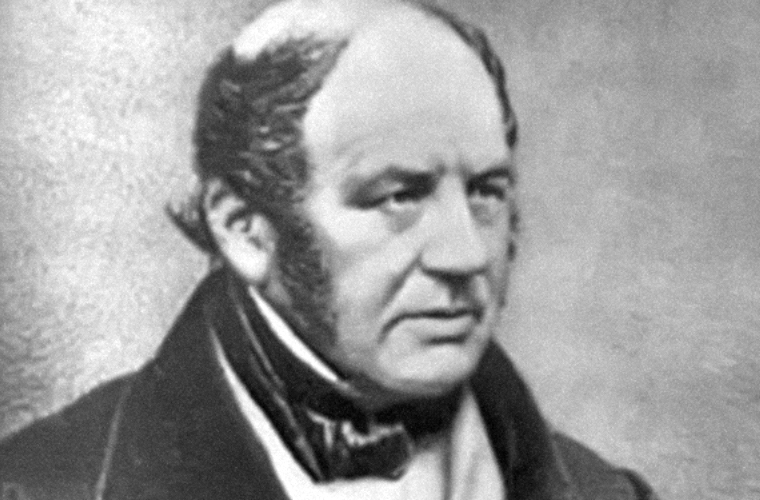In 1851, Dr. Cartwright delivered a paper which ran in De Bow’s Review, one of the South’s most widely-read periodicals. “Diseases and Peculiarities of the Negro” began by concluding that the white race and African race had “anatomical and physiological differences.” These had to be recognized, he claimed: “otherwise, their diseases cannot be understood.”
These differences were more than simply skin color. Their dark skin, Cartwright believed, was certainly a symptom of something deeper. He believed that “the membranes, the muscles, the tendons, … all the fluids and secretions… even the negro’s brains and nerves, the chyle and all the humor, are tinctured with a shade of the pervading darkness.”
Everything, it seems, was different. From the whiter, harder bones to the face, which was “thrown more upwards,” was apparent. Even the way the black racewalked, which Cartwright described as “hopper-hipped,” was an indication that they were a very separate and incredibly debased race. He put forward that these traits had “rendered the people of Africa unable to take care of themselves.”
This, Cartwright held, was exactly “why they have always preferred, as more congenial to their nature, a government combining the legislative, judicial and executive powers in the same individual, in the person of a petty king, a chieftain, or master; why, in America, if let alone, they always prefer the same kind of government, which we call slavery, but which is actually an improvement on the government of their forefathers, as it gives them more tranquility and sensual enjoyment, expands the mind and improves the morals, by arousing them from that natural indolence so fatal to mental and moral progress.”
As a Southern physician, Dr. Cartwright treated many slaves and certainly understood the diseases particular to them as well as any of his colleagues. Treating the diseases, however, was not enough for him. Cartwright concluded that the diseases most prevalent among the slaves – various fevers, skin diseases, and tuberculosis – were diseases that only those of the African race could catch. If he saw similar diseases in members of the white race, Cartwright simply waved them away. He ignored the similarities, focusing instead on any perceived differences he observed.
For instance, Cartwright insisted that what he called “negro consumption” was not anything like the consumption (tuberculosis) that afflicted white people. In this he was correct, but only because “negro consumption” was actually malaria – a disease quite unlike tuberculosis.
Drapetomania, or the Disease-Causing Negroes to Run Away
Dr. Cartwright, as well as many others, concluded that slavery was beneficial and even enjoyed by the slaves. But with the number of runaway slaves greatly increasing, Cartwright had two choices.
First, he could rationally look at his theory and conclude that black people ran away because they didn’t like slavery. Or, second, he could make up some crazy disease to explain it all away.
Of course, Cartwright chose the latter. He named this crazy disease Drapetomania, combining the Greek words for “runaway slave” and “mad or crazy.”
“The cause, in the most of cases,” Cartwright explained, “that induces the negro to run away from service, is as much a disease of the mind as any other species of mental alienation….”
This is as deep as Cartwright probes when it comes to the actual cause of the disease. He did, however, have a cure, which was “clearly implied, though not directly expressed” in the Old Testament, which he believed taught the “true art of governing the negroes in such a manner that they cannot run away.” There, they were apparently told to become, as Cartwright put it, “the submissive knee-bender.”
The trick was, wrote Cartwright, to neither abuse nor treat as an equal the slave. In this way, “the negro is spell-bound, and cannot run away.”
From his acute observation, he noticed that there were two classes of slave owners who lost their slaves. The first “made themselves too familiar with them, treating them as equal, and making little or no distinction in regard to color.” The other class “treated them cruelly, denied them the common necessaries of life, neglected to protect them against the abuses of others, or frightened them by a blustering manner of approach, when about to punish them for misdemeanors.”
One of the earliest symptoms of this affliction was depression. “Before the negroes run away,” he wrote, “unless they are frightened or panic-struck, they become sulky and dissatisfied.”
If there was an obvious reason for their sulkiness, Cartwright advised how to treat it. On the other hand, if there seemed to be no true reason for it, if they were “sulky and dissatisfied without cause,” then he recommended “whipping them out of it, as a preventive measure against absconding, or other bad conduct. It was called whipping the devil out of them.”
Somehow or another, Cartwright could not see this as either abusive or manipulation but relied upon the Biblical edicts which allowed slavery and gave instructions on how to treat your slaves. If all was done in accordance to God, he believed, the slave would indeed become “the submissive knee-bender.”
“They have only to be kept in that state and treated like children, with care, kindness, attention, and humanity, to prevent and cure them from running away.”

